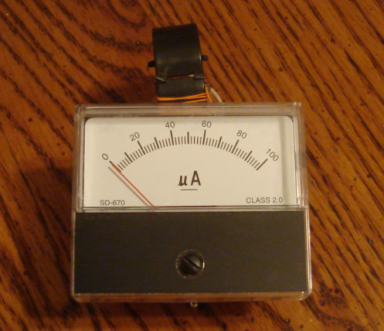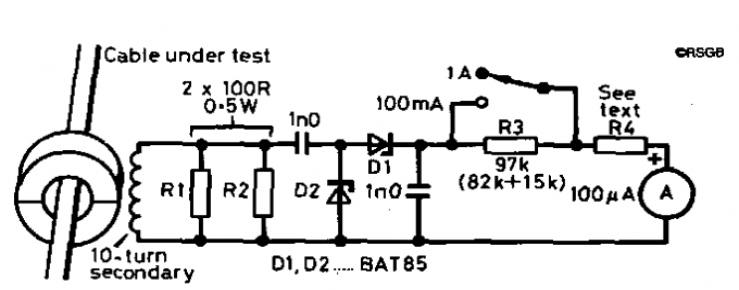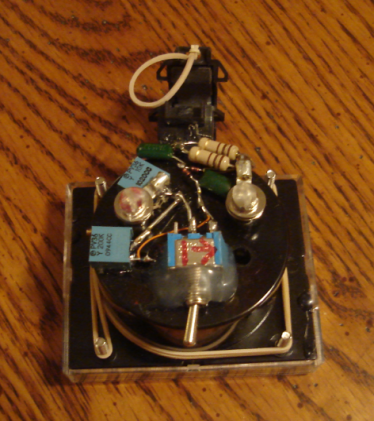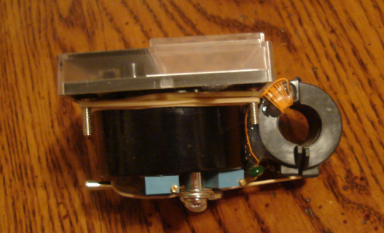Stop Guessing and Built This Simple Meter Making Measurements Easy to Take Why a Hand Held RF Current Meter There are two things that I wanted to do which would be made easy with a current meter... Both are related to the unusual nature of the antenna here at AC0C. There are two things that I wanted to do which would be made easy with a current meter... Both are related to the unusual nature of the antenna here at AC0C.
1. Checking common mode surface current on coax and control cables up in the attic antennas. With the high cost of ferrites, placing them with the aid of a current meter is very helpful in that you can compare the before (no ferrite) and after (with ferrites attached) - and know that you have addressed the current problem on a given bit of line. Otherwise, it seemed to me, that ferrite placement was more of a guess than a science. 2. Measuring relative antenna currents along an element With the W8WWV RVM system, I can measure element currents where ever a current sensor is placed. This is typically at the center of a dipole element. However, the center may or may not be the actual high-current point for the element depending on the frequency. My EZNEC models can indicate where the current peaks are - and by looking along these lines manually - comparing them with readings taken from the driven element, I can make current checks even in non-standard location of the array. The meter described below accomplishes these two tasks very nicely. Design IdeaThe design follows an old RSGB design that I found on G3SEK's excellent web site: http://www.ifwtech.co.uk/g3sek/clamp-on/clamp-on.htm 
I followed this design pretty close except for the R3/R4 which I used variable trim pots. Due to the voltage-doubler nature of the circuit, it's capable of exceptional sensitivity. The meter was calibrated for full-scale @ 1A on the higher scale, but I have left the lower scale set on a very high sensitivity setting which I find very handy for the common mode checking. Here, a sensitive meter providing a relative current indication is needed. Construction Details  Once parts were in hand, construction was very easy and took perhaps an hour. Once parts were in hand, construction was very easy and took perhaps an hour.
No attempt was made to beautify the work - it's 100% orientated toward functionality and utility. I had a 100 uA meter in the junk box along with the other parts needed and orienting them on the back-side of the meter was really the most time consuming aspect. The switch is held in position with hot-glue. And a bit of hot glue is applied to the meter terminations as a safety precaution - just in case I were to brush the meter up against something carrying high levels of current. Wraps around the toroid were made with wire-wrap type wire, 30 Gage. 
Selection of the toroid used was based on what would physically fit around the RG-213 sized cable and could be easily opened and closed. The rubber band shown in the picture makes for a very convenient closing mechanism - and in a lot of applications, I simply hold the toroid closed with my finger pressure which makes moving the meter along a wire - and moving from cable to cable - very quick and easy. For more ideas, check out Frank N4SPP's very nice RF current meter found HERE. |